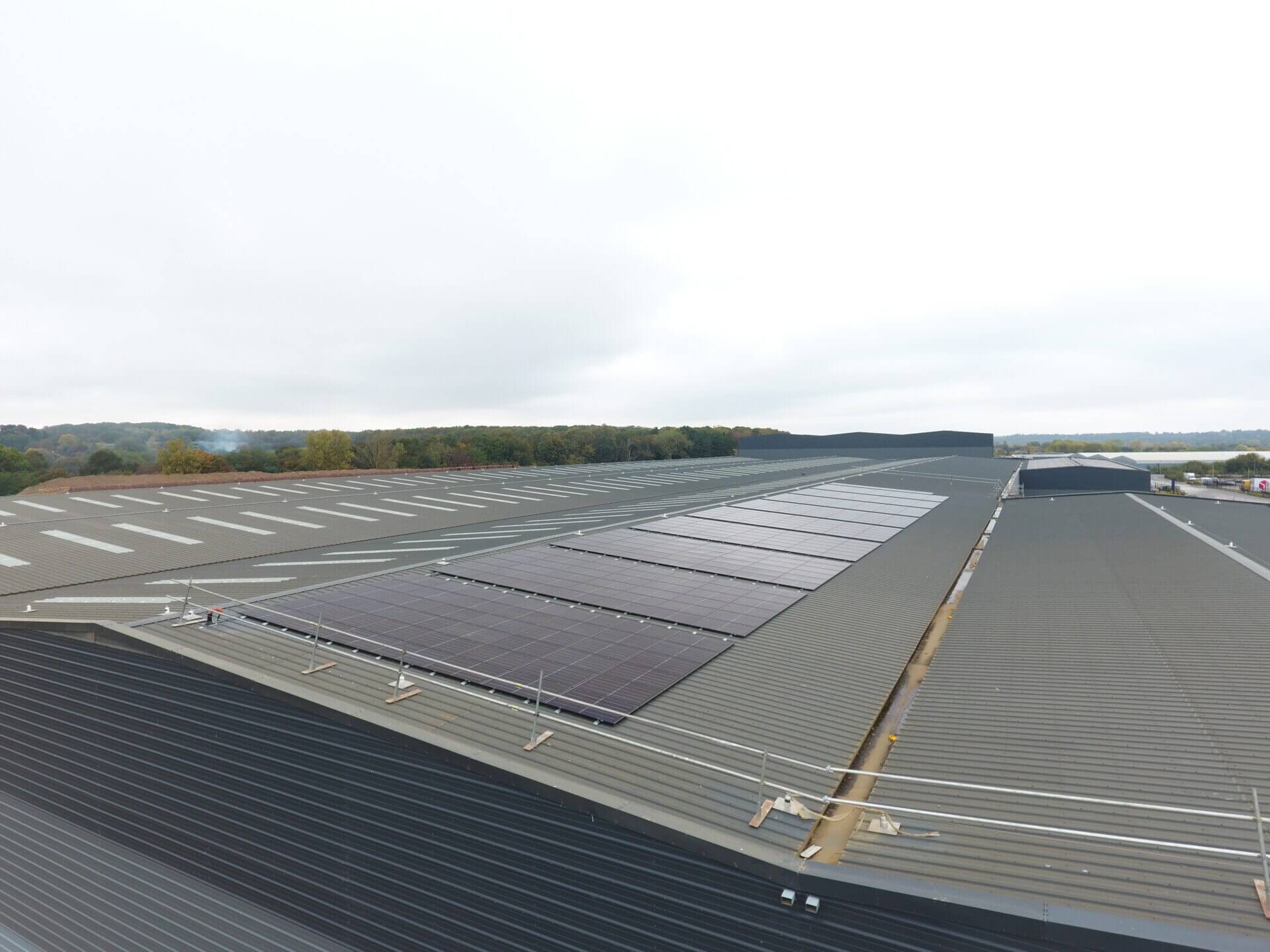Climate change is one of the most pressing issues of our time, and nations around the world are working with how best to address it. Among these, the United Kingdom stands out for its proactive and multifaceted approach. From ambitious legislative measures to innovative green initiatives, the UK is leading the charge in combatting climate change. This blog post explores the UK’s efforts across various fronts, highlighting the policies, projects, and partnerships driving its transition to a low-carbon, sustainable future.
Climate Change Legislation: The UK’s Commitment to Net Zero Emissions
The UK has set a clear and ambitious target to achieve net-zero greenhouse gas emissions by 2050. This commitment is enshrined in law through the Climate Change Act 2008, which was amended in 2019 to include the net-zero target. The act mandates regular carbon budgets and establishes a framework for reducing emissions through a series of legally binding targets.
The government’s legally binding carbon budgets set limits on the total amount of greenhouse gases the UK can emit over five-year periods. These budgets are designed to ensure a gradual and consistent reduction in emissions. The Committee on Climate Change (CCC), an independent advisory body, plays a crucial role in advising the government on setting and meeting these budgets.
Additionally, the UK has introduced the Ten Point Plan for a Green Industrial Revolution, which outlines key areas of focus, including advancing offshore wind, promoting electric vehicles, and investing in carbon capture and storage. This plan is a testament to the UK’s commitment to both environmental sustainability and economic growth.

Renewable Energy Revolution: Wind, Solar, and Offshore Developments
Renewable energy is at the heart of the UK’s strategy to combat climate change. The country has made significant strides in harnessing wind, solar, and offshore energy. The UK is home to some of the largest offshore wind farms in the world, such as the Hornsea Project One, which has the capacity to power over one million homes.
Solar energy also plays a vital role in the UK’s renewable energy mix. While the country’s climate may not seem ideal for solar power, advancements in technology and government incentives have led to a steady increase in solar installations. Community solar projects and rooftop installations contribute significantly to the UK’s renewable energy capacity.

Green Infrastructure Investments: Building Sustainable Transportation and Buildings
Transforming infrastructure is crucial for achieving a low-carbon future. The UK is investing heavily in green infrastructure, focusing on sustainable transportation and energy-efficient buildings. The government’s Road to Zero strategy aims to phase out the sale of new petrol and diesel cars by 2030, with a target of having zero-emission vehicles by 2035.
Investment in public transportation is also a key component of the UK’s green infrastructure strategy. Projects such as the High Speed 2 (HS2) rail network aim to provide faster, more efficient, and environmentally friendly travel options. Additionally, expanding cycling and walking networks encourages active transportation and reduces reliance on cars.
Energy efficiency in buildings is another critical area. The government’s Green Homes Grant scheme provides funding for homeowners to improve the energy efficiency of their properties. Measures such as insulation, heat pumps, and double glazing help reduce energy consumption and lower carbon emissions.
Carbon Pricing and Emissions Trading Schemes
Carbon pricing is an effective tool for reducing greenhouse gas emissions by assigning a cost to carbon pollution. The UK has implemented a carbon pricing mechanism through the Carbon Price Floor (CPF) and participates in the EU Emissions Trading System (ETS).
The Carbon Price Floor sets a minimum price for carbon emissions from the power sector, encouraging investment in low-carbon technologies. By making fossil fuels more expensive, the CPF incentivises the shift towards cleaner energy sources.
The EU ETS, which the UK was part of before Brexit, is a cap-and-trade system that sets limits on emissions from industries such as power generation, manufacturing, and aviation. Companies can buy and sell emissions allowances, creating a financial incentive to reduce emissions. Although the UK has left the EU, it has established its own UK ETS to continue this approach.
Nature-Based Solutions: Reforestation, Peatland Restoration, and Biodiversity Conservation
Nature-based solutions are integral to the UK’s climate strategy. Reforestation, peatland restoration, and biodiversity conservation are essential for sequestering carbon and enhancing ecosystem resilience. The government’s England Tree Strategy aims to increase tree planting and woodland creation to capture carbon and provide habitat for wildlife.
Peatlands, which cover around 12% of the UK’s land area, are vital carbon sinks. The UK’s Peatland Action Programme focuses on restoring degraded peatlands to enhance their ability to sequester carbon and improve biodiversity. By re-wetting drained peatlands and restoring natural vegetation, the programme aims to prevent further carbon emissions and promote habitat recovery.
Biodiversity conservation efforts include protecting and restoring natural habitats such as wetlands, grasslands, and marine environments. The government’s 25 Year Environment Plan outlines strategies for safeguarding biodiversity, enhancing natural capital, and improving environmental quality.

International Climate Diplomacy: The UK’s Role in COP and Global Climate Agreements
The UK plays a significant role in international climate diplomacy. As the host of the 26th UN Climate Change Conference of the Parties (COP26) in Glasgow, the UK has been at the forefront of global climate negotiations. The conference aims to accelerate action towards the goals of the Paris Agreement and address the climate crisis.
In addition to hosting COP26 in 2021, the UK is actively involved in various international climate agreements and initiatives. The UK participates in the Powering Past Coal Alliance, which seeks to phase out unabated coal power and promote clean energy. The UK is also a member of the Climate Ambition Alliance, which aims to enhance global climate ambition and accelerate the transition to a low-carbon economy.
Through its involvement in these initiatives, the UK demonstrates its commitment to global climate leadership and collaboration.
Climate Resilience and Adaptation Measures
Adapting to the impacts of climate change is crucial for building resilience. The UK has developed a National Adaptation Programme (NAP) to address the risks posed by climate change and enhance the country’s resilience. The NAP outlines actions to manage risks such as flooding, heatwaves, and sea level rise.
Flood management is a key focus area, with investments in flood defences and early warning systems. The Environment Agency’s Flood and Coastal Erosion Risk Management Strategy aims to reduce flood risk and improve resilience through measures such as natural flood management, community engagement, and adaptive planning.
Heatwave preparedness is another important aspect of climate resilience. The government’s Heatwave Plan for England provides guidance on reducing the health impacts of extreme heat, particularly for vulnerable populations.

Public Awareness and Engagement Campaigns
Raising public awareness and engaging citizens in climate action is essential for driving change. The UK government and various organisations run campaigns to educate and inspire individuals to take action on climate change.
Campaigns such as “Act on CO2” and “The Climate Coalition” aim to raise awareness about the impacts of climate change and encourage sustainable behaviours.
Public engagement initiatives include community-led projects, school education programmes, and social media campaigns.
By fostering a sense of collective responsibility and empowering individuals to make sustainable choices, these campaigns contribute to a broader cultural shift towards environmental stewardship.
Green Finance and Investment Initiatives
Financial support is crucial for driving the transition to a low-carbon economy. The UK is at the forefront of green finance and investment initiatives, aiming to mobilise private capital for sustainable projects. The government’s Green Finance Strategy outlines measures to align financial flows with climate goals and promote sustainable economic growth.
The Green Investment Group (GIG) is a leading example of green finance in action. Established by the UK government, GIG invests in renewable energy, energy efficiency, and low-carbon infrastructure projects. By leveraging private sector investment, GIG accelerates the deployment of green technologies and supports the transition to a sustainable economy.
Additionally, the UK has issued green bonds to finance environmentally friendly projects. These bonds raise capital for initiatives such as renewable energy, clean transportation, and sustainable agriculture.
Challenges and Opportunities Ahead
Despite significant progress, the UK faces challenges in achieving its climate goals. Addressing equity and ensuring a just transition for all communities is essential. The transition to a low-carbon economy must be inclusive, providing opportunities for retraining and employment in green industries.
Technological innovation is crucial for overcoming challenges and seizing opportunities. Continued investment in research and development, particularly in areas such as carbon capture and storage, renewable energy technologies, and energy storage, will drive progress towards a sustainable future.
Collaboration between government, businesses, and civil society is vital for addressing the complex challenges posed by climate change. By working together, stakeholders can develop innovative solutions and create a resilient, low-carbon economy.
Conclusion
The UK’s efforts to combat climate change are comprehensive and multifaceted, spanning legislation, renewable energy, green infrastructure, and international diplomacy. These initiatives demonstrate the UK’s commitment to leading the global transition to a sustainable future.
By understanding the UK’s strategies and successes, other nations can learn valuable lessons and adopt similar approaches to address the climate crisis. Together, we can build a resilient, low-carbon world for future generations.
By following these steps, the UK showcases its leadership in the fight against climate change. From ambitious legislative measures to cutting-edge green initiatives.
Join the movement and be part of the solution together, we can create a sustainable future, call on 01455 552 511 to discover how our solar energy solutions can make a difference.

